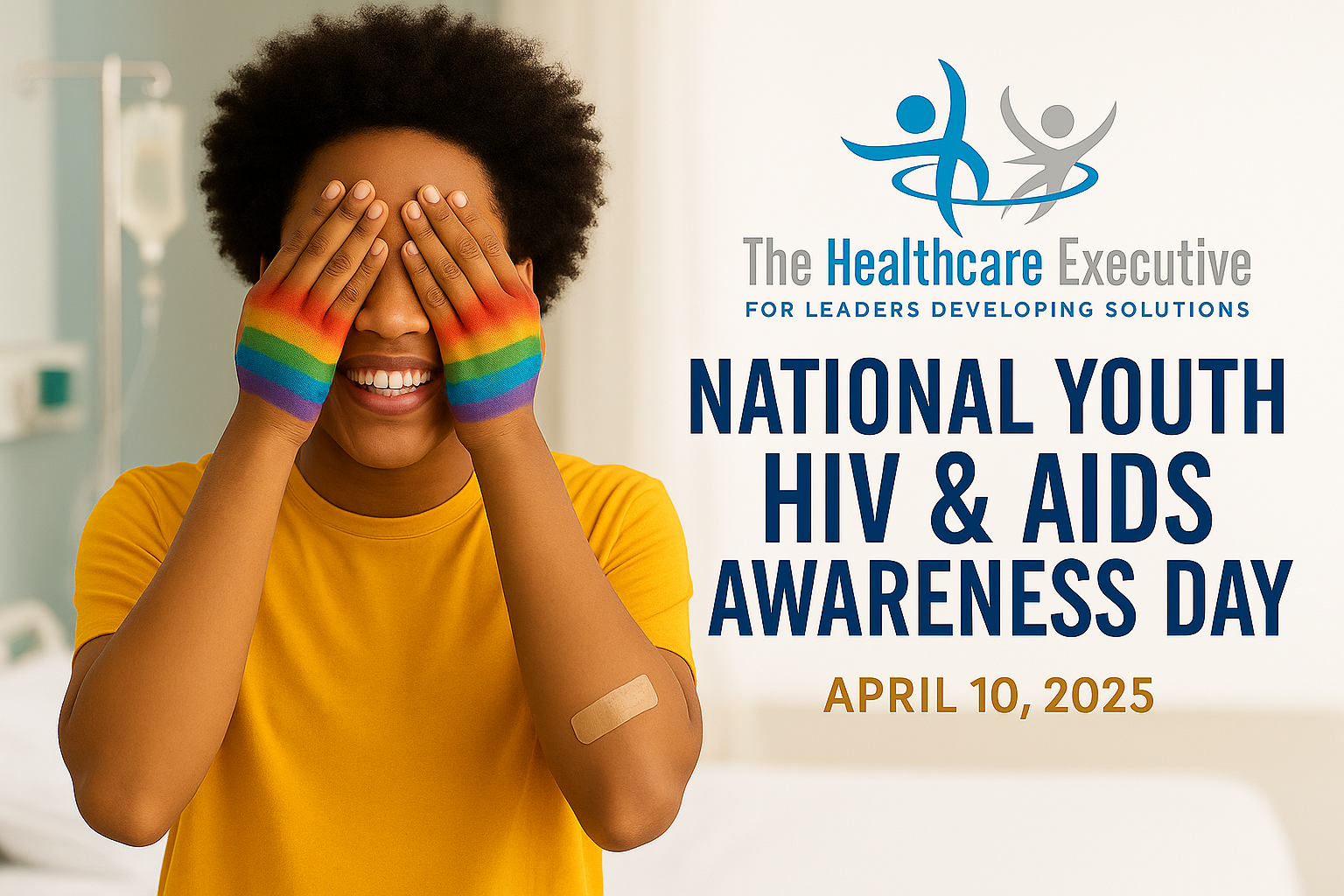National Youth HIV & AIDS Awareness Day

- Posted by Greg Wahlstrom, MBA, HCM
- Posted in Health Observance Calendar
Executive Leadership in Youth-Centered HIV Prevention and Equity
Published: April 10, 2025
National Youth HIV & AIDS Awareness Day, observed annually on April 10, highlights the urgent need for age-appropriate prevention, stigma-free care, and inclusive health strategies for young people affected by HIV. This observance calls on hospital leaders and healthcare executives to evaluate how effectively their institutions are meeting the needs of adolescents and young adults at risk. According to the Centers for Disease Control and Prevention (CDC), young people aged 13–24 account for approximately 20% of all new HIV diagnoses in the United States. Hospitals and community health centers must lead the way in making testing, education, and prevention resources available without stigma. Systems like Children’s Hospital Los Angeles have developed youth-specific programs that integrate sexual health, behavioral health, and peer-led counseling to engage underserved populations. National Youth HIV & AIDS Awareness Day is a time to reflect on institutional blind spots and strengthen frontline strategies.
Healthcare executives must recognize that access to HIV prevention and treatment is not evenly distributed—particularly for youth facing economic hardship, housing instability, or discrimination. Inclusive care models that consider cultural humility, trauma-informed communication, and identity-affirming services are essential. Systems like Mount Sinai Adolescent Health Center offer a template for multidisciplinary youth engagement that includes HIV testing, PrEP counseling, and primary care integration. Executive teams should review how their organization tracks HIV testing rates among adolescents, engages local schools or shelters, and ensures youth voices are included in advisory boards or program design. National Youth HIV & AIDS Awareness Day is an opportunity to reframe the conversation from reactive intervention to proactive empowerment. When young people are treated as co-designers of care, outcomes improve and stigma diminishes.
Digital engagement is a powerful yet underutilized tool for reaching youth with HIV-related health education and services. Executives should work closely with public health teams, digital marketing leads, and adolescent medicine departments to develop mobile-first strategies that resonate with younger audiences. These may include anonymous Q&A platforms, text-based appointment scheduling, or social media campaigns developed by youth advisory councils. At Emory’s Center for AIDS Research, researchers are exploring the impact of digital storytelling and peer influencers in increasing HIV testing uptake among youth. Hospital leaders must ensure that these strategies are ethically governed, privacy-protected, and equity-driven. On National Youth HIV & AIDS Awareness Day, boards should review how technology is enabling—not replacing—human connection, especially in vulnerable populations. Innovation must center the lived experiences of young people, not just their risk profiles.
To truly advance care equity, hospital systems must confront and dismantle structural barriers to HIV prevention, testing, and treatment for youth. This includes addressing insurance gaps, confidentiality concerns for minors, and restrictive state policies that limit adolescent access to care. Executives can lead by championing policy changes, expanding Medicaid partnerships, and training staff on adolescent rights and clinical consent laws. Systems like Boston Medical Center’s Project TRUST offer walk-in services designed for youth without documentation or insurance. Boards of directors should receive data on how institutional policies affect access for LGBTQ+ youth, youth of color, and those in rural areas. National Youth HIV & AIDS Awareness Day should trigger deeper analysis of who the system is failing—and how that failure can be corrected with strategic action. Equity is not a tagline; it’s a measurable system commitment.
As National Youth HIV & AIDS Awareness Day concludes, hospital executives must ensure that the day’s message is not symbolic—but transformative. Communications teams should highlight real stories of resilience, programs offering confidential care, and partnerships improving outcomes. Operations and strategy teams must align future investments with inclusive adolescent health infrastructure. Boards should expect annual progress reports on youth engagement, community impact, and outcome disparities. Above all, leaders should listen directly to young people—and invite them to the decision-making table. This observance is not just about raising awareness; it’s about redistributing power, prioritizing trust, and designing a healthcare future that includes and uplifts the next generation. The future of HIV prevention starts now—and it starts with leadership.
Discover More
Explore how executives are advancing health equity and inclusive strategies for youth-centered care and prevention models across the U.S.



